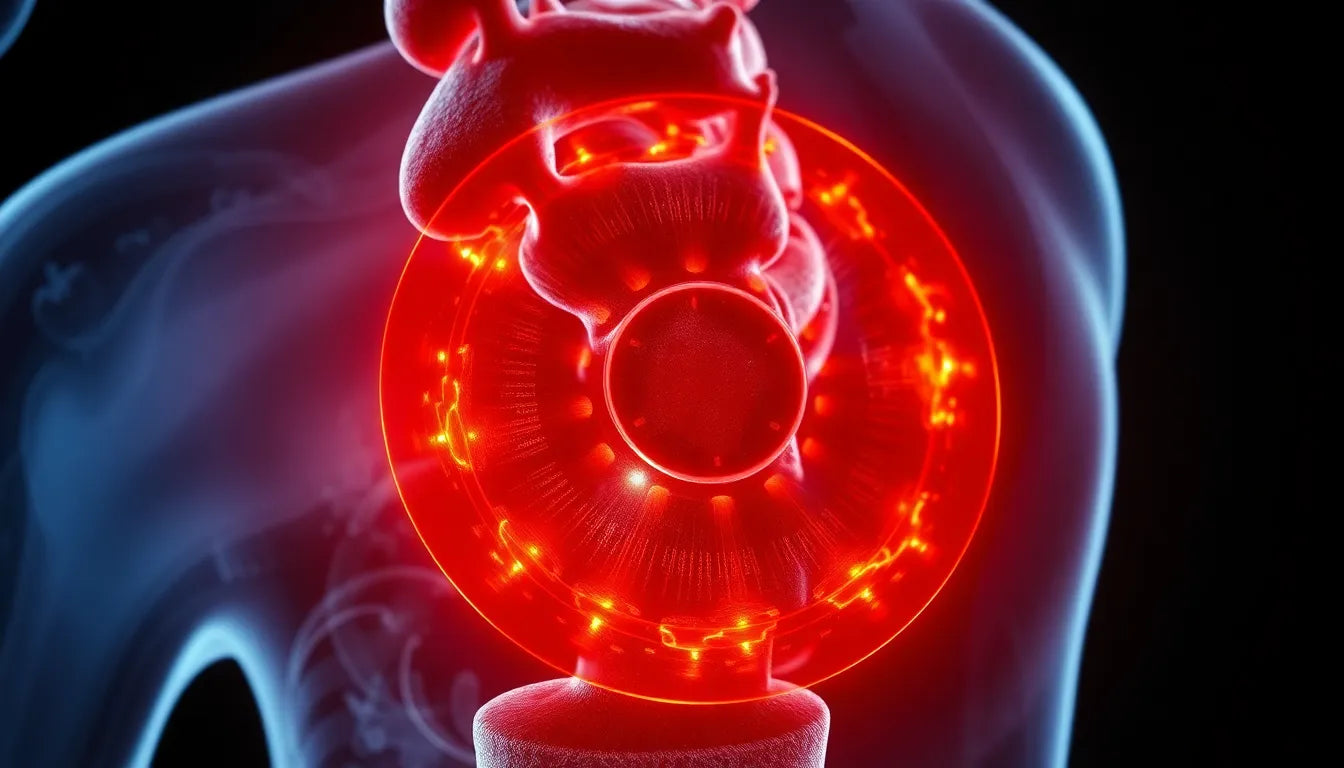Understanding the journey of recovering from a herniated disc is crucial for anyone experiencing this common spinal issue. A herniated disc, often referred to as a slipped or ruptured disc, occurs when the soft center of a spinal disc pushes through a crack in the tougher exterior casing. This can lead to irritation or pressure on nearby nerves, resulting in pain, numbness, or weakness in an arm or leg, depending on the location of the herniation.
Individuals suffering from a herniated disc often face a range of symptoms that can significantly disrupt daily life. These symptoms can vary from mild discomfort to severe pain, impacting one's ability to perform routine activities. Common challenges include persistent back pain, sciatica, and difficulty moving or standing for extended periods. The intensity of these symptoms can differ based on the severity and location of the herniation within the spine.
Importance of recovery
The significance of a timely and effective recovery from a herniated disc cannot be overstated. Without proper management, this condition can lead to chronic pain and long-term disability, severely affecting one's quality of life. Addressing the issue promptly and adopting a structured recovery plan is essential to prevent these potential complications.
This blog aims to shed light on the recovery timeline for a herniated disc and explore effective strategies to expedite the healing process. Understanding the phases of recovery and the factors influencing the duration is vital for setting realistic expectations and achieving a successful outcome. By gaining insight into the recovery journey, individuals can take proactive steps to enhance their recovery and return to normal life more swiftly.
As we delve into the specifics of the recovery process, we will discuss the various stages of healing and the elements that can impact recovery time. Additionally, we will provide tips and recommendations to help accelerate the healing process, emphasizing the importance of early intervention and lifestyle modifications.
Whether you're currently dealing with a herniated disc or supporting someone who is, this guide aims to equip you with the knowledge and tools needed to navigate the recovery journey effectively. By understanding the intricacies of herniated disc recovery, you can make informed decisions that promote healing and improve your overall well-being.
Recovery timeline and influencing factors
Recovering from a herniated disc is a process that unfolds over several phases, each critical to restoring function and relieving pain. The timeline for recovery can vary greatly among individuals, influenced by factors such as the severity and location of the herniation, as well as personal health characteristics. Understanding these phases and factors can help set realistic expectations for the healing journey.
Phases of recovery
The recovery process can be divided into distinct phases. The immediate phase, typically spanning the first 1-2 weeks, prioritizes pain management and rest. During this period, individuals are encouraged to avoid activities that exacerbate symptoms, allowing the body to initiate the healing process.
Following this, the subacute phase, which lasts from 2 to 6 weeks, involves a gradual reintroduction of activities and the commencement of physical therapy. This phase focuses on gently increasing mobility and reducing pain through controlled movements under professional guidance.
The rehabilitation phase, extending from 6 weeks to 6 months, is crucial for strengthening the muscles supporting the spine and enhancing overall mobility. During this time, individuals engage in a structured exercise program designed to rebuild strength and prevent future injuries.
Finally, the chronic phase, which occurs beyond 6 months, addresses any persistent symptoms and involves long-term management strategies. This phase may require ongoing physical therapy and lifestyle adjustments to maintain spinal health and prevent recurrence.
Factors affecting recovery
Several factors can influence the pace and success of recovery from a herniated disc. The severity of the herniation and its location within the spine are primary determinants. More severe herniations or those affecting critical nerves may require a longer recovery period.
Age, overall health, and lifestyle habits also play significant roles. Younger individuals with good general health often experience quicker recoveries. Conversely, habits such as smoking or poor diet can impede the healing process, highlighting the importance of a healthy lifestyle in recovery.
Signs of improvement and tips for faster recovery
Recognizing progress
Monitoring signs of improvement is essential for evaluating recovery progress. Reduced pain levels, increased mobility, and the ability to perform daily activities with less discomfort are positive indicators. Regular assessments with a healthcare provider can help track these improvements and adjust recovery plans accordingly.
Accelerating recovery
Several strategies can expedite recovery from a herniated disc. Early diagnosis and intervention are crucial, as they allow for timely treatment and prevent the condition from worsening. Engaging in regular exercise and physical therapy is vital for strengthening the back and improving flexibility.
Nutritional support, including a balanced diet rich in anti-inflammatory foods, can promote healing. Additionally, maintaining a healthy lifestyle by avoiding smoking and practicing good posture can significantly impact recovery outcomes.
In summary, understanding the phases of recovery and the factors influencing the timeline is key to managing expectations and achieving a successful outcome. By recognizing signs of improvement and adopting strategies to accelerate healing, individuals can enhance their recovery journey and return to normal life more swiftly.
Long-term healing and managing chronic pain
Recovering from a herniated disc is not just about the immediate relief of symptoms but also about understanding the body's natural healing process and managing any long-term discomfort. Over time, the body can absorb some of the damaged disc material, which may lead to a reduction in symptoms even if complete healing is not achieved. This natural absorption process can take weeks to months and varies significantly among individuals.
For those experiencing chronic pain, managing long-term discomfort becomes crucial. Strategies include consistent physical therapy, maintaining a healthy lifestyle, and possibly incorporating pain management techniques such as mindfulness or yoga. These approaches not only help in alleviating ongoing pain but also in preventing future occurrences. Regular monitoring and adjustments to treatment plans with healthcare professionals are essential to address persistent symptoms effectively.
Frequently Asked Questions
What are the signs of a herniated disc healing?
Signs of healing from a herniated disc include reduced pain levels, increased mobility, and the ability to perform daily activities with less discomfort. Improvement in symptoms such as numbness or weakness in limbs is also a positive indicator of recovery.
How long does it take for a herniated disc to heal completely?
The healing time for a herniated disc varies depending on several factors, including the severity of the herniation, its location, and individual health conditions. Generally, recovery can range from a few weeks to several months, with most individuals seeing significant improvement within 6 weeks to 6 months.
Can lifestyle changes impact recovery from a herniated disc?
Yes, lifestyle changes can significantly impact recovery. Engaging in regular exercise, maintaining a balanced diet, and avoiding smoking can enhance the healing process. These habits contribute to overall health, which supports the body's ability to recover.
Is surgery always necessary for a herniated disc?
Surgery is not always necessary for a herniated disc. Many cases improve with conservative treatments such as physical therapy, medication, and lifestyle modifications. Surgery may be considered if these treatments do not alleviate symptoms or if there is significant nerve compression causing severe symptoms.
How can I prevent a herniated disc from recurring?
Preventing a herniated disc from recurring involves maintaining a healthy spine through regular exercise, proper posture, and safe lifting techniques. Strengthening core muscles and avoiding activities that put excessive strain on the back are also important preventive measures.
In conclusion, understanding the recovery process and actively participating in your healing journey are crucial steps to returning to normal life after a herniated disc. By implementing proactive management strategies and seeking professional guidance, individuals can effectively navigate the challenges of recovery and achieve long-term spinal health.


















